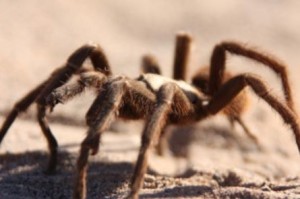Wildlife is on its migratory voyage during the fall, which makes this an optimal season to catch nature in action. Witness critters on the move and learn about how we can continue to preserve their habitats. —Brenda Rees
Land: Tarantulas
Usually nocturnal, hairy male arachnids leave their underground burrows to search for females during the daytime.
Prime viewing: September through October.
Where: The annual mating season sets tarantulas on the march throughout SoCal grasslands, chaparral, canyons, and deserts. Orange County’s Thomas F. Riley Wilderness Park rangers report seeing both brown and gray/black species on their trails. Monthly ranger-led hikes are a good way to see these shy, solitary creatures.
Contact: 30952 Oso Parkway, Coto de Caza. 1-949-923-2265
Air: Vaux’s swifts
These slim, fast-moving birds with their high-pitched, continuous chattering prefer roosting in chimneys.
Prime viewing: September through October.
Where: Vaux’s swifts travel through the Southland from Alaska to warmer winter climates. At peak migration, thousands of Vaux’s swifts can be seen entering chimneys, including those along East Street and Ninth Avenue in San Diego and the top level of Joe’s Auto Park at 440 South Broadway in downtown Los Angeles, where the Audubon Center at Debs Park typically sponsors a viewing party. Check website for details.
Contact: 4700 N. Griffin Avenue, Los Angeles. 1-323-221-2255.
Sea: Pacific gray whales
The barnacle-encrusted, sleek, torpedo-shaped marine creatures have one of the longest migrations of any mammal.
Prime viewing: November through April.
Where: Pacific gray whales travel 10,000 to 12,000 miles round-trip every year from their Arctic feeding grounds to Mexico, where females give birth in the warmer waters. The Aquarium of the Pacific offers daily cruises to search for these gentle giants that swim past Long Beach Harbor’s coastline.
Contact: 100 Aquarium Way, Long Beach. 1-562-590-3100
